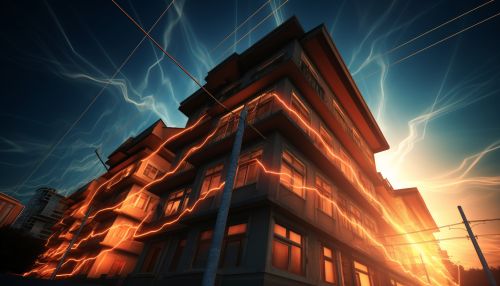Seismic design
Introduction
Seismic design is a branch of structural engineering that deals with the analysis and design of structures to withstand seismic loads. It is a specialized discipline that requires a deep understanding of the behavior of structures under seismic loading, the properties of seismic waves, and the characteristics of the site where the structure is to be built.
Seismic Loads
Seismic loads are forces that are induced in structures due to the ground motion during an earthquake. These forces can be significantly larger than the forces due to gravity and wind, and can cause severe damage to structures if not properly accounted for in the design. The magnitude of the seismic loads depends on several factors, including the intensity of the earthquake, the distance from the epicenter, the type of soil, and the characteristics of the structure itself.


Seismic Design Principles
The main principles of seismic design are to ensure that the structure can resist the seismic loads without collapse, to limit the damage to non-structural elements, and to ensure that the structure can be safely exited after an earthquake. This is achieved by designing the structure to behave in a ductile manner, which means that it can deform significantly without losing its load-carrying capacity.
Seismic Design Codes
Seismic design codes are regulations that provide guidelines for the design of structures to resist seismic loads. These codes are based on the latest research and are regularly updated to reflect the current understanding of seismic behavior of structures. They specify the methods for calculating the seismic loads, the design criteria for different types of structures, and the detailing requirements to ensure ductile behavior.
Seismic Design Methods
There are several methods for seismic design, including the Equivalent Static Force Method, the Response Spectrum Method, and the Time History Method. Each of these methods has its own advantages and limitations, and the choice of method depends on the complexity of the structure and the level of accuracy required.
Seismic Design of Different Types of Structures
The seismic design of structures varies depending on the type of structure. For example, the seismic design of buildings involves the design of the lateral force-resisting system, which includes the walls, floors, and the connections between them. The seismic design of bridges involves the design of the piers, the superstructure, and the connections between them. The seismic design of dams involves the design of the dam body and the foundation.
Seismic Design Considerations
There are several considerations in seismic design, including the selection of the appropriate design method, the determination of the seismic loads, the design of the structural elements, and the detailing of the connections. In addition, the design must also consider the effects of soil-structure interaction, the potential for liquefaction, and the effects of aftershocks.
Seismic Design Challenges
Despite the advances in seismic design, there are still several challenges that need to be addressed. These include the prediction of the intensity and frequency of earthquakes, the modeling of the complex behavior of structures under seismic loads, and the design of structures to withstand rare but extreme earthquakes.
